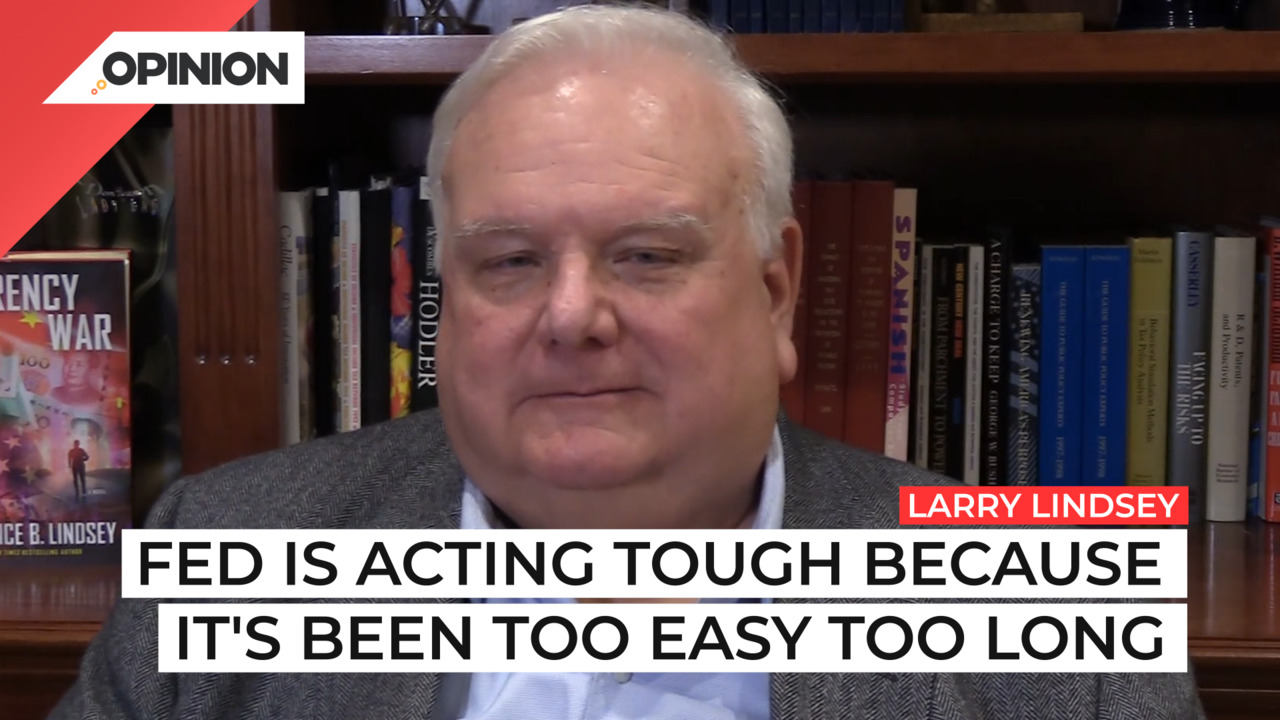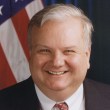
Commentary
-
Our commentary partners will help you reach your own conclusions on complex topics.
The Federal Reserve surprised markets at its last meeting. Everyone expected them to raise their interest rates by three quarters of a percentage point or what’s called 75 basis points. And they did that.
But then in their projections, they indicated they were probably going to raise rates another three quarters of a percentage point in November, and then another 50 basis points or half a percentage point in December.
That was much higher than markets expected. They had expected a gradual pause or slow down, maybe 50 in November and 25 in December. So already we’re talking about a 75, or 50 to 75 basis point higher interest rate at the end of this year than people had planned on.
Well, markets responded. We had a very bad week for equities, stock market. Bond yields soared; the yield on a 10-year US Treasury went up more than three quarters of a percentage point during the entire month.
That’s an unheard of kind of increase. We had increases of almost a fifth of a percentage point in a single day. And the foreign exchange markets went crazy. The dollar hit highs that it hadn’t seen in 20 or 30 years. What’s the problem? Well, when you have big movements in markets, it’s usually a sign there’s not a lot of money there that’s sitting on the sidelines to come in.
If it was, you wouldn’t get this big difference, we wouldn’t have to have a big difference in the price in order to find a buyer because someone would step in. They haven’t been. So this is a sign that we have a liquidity problem in our markets, and more volatility should be expected ahead.
I might also point out that when things move a whole lot, most people in the markets aren’t really gamblers. Right, they’re there to make an investment. And when things move a lot, they tend to be willing to put less money out there in the market, because they might lose it very quickly. So this tends to feed on itself and make the situation worse. We also have to keep in mind that inflation is likely to come down only very slowly.
And the reason is, is that our labor market has now incorporated the idea of inflation in it.
Wages have risen at an annual rate of about five and a quarter percent over the last year. The Georgia, the Atlanta Fed wage tracker said they’re rising at about a 6.7% rate over the last three months. This is very quick. You have to convince people that wages are going to come down before they actually do and the way you do that is first you have to overshoot and cause a recession. And the recession, companies get less demand for their goods.
When they get less demand for their goods, the first thing they’re going to do is take down those “help wanted” signs. Right now there are 11 million open jobs in America. Only after those come down will they begin layoffs. After all, I’ve been looking for workers for so long, if I’ve got one who’s functioning on the job, I’m not going to lay her off or him off until I’m really sure that I’m not going to need them.
And then it’s only when those layoffs stop that workers get nervous and start demanding lower pay increases. This is a long process. And until you get wage disinflation, because it’s the biggest component of all costs, you’re not going to get a lot of price disinflation. In the end, the Fed is acting tough. The reason they have to act tough is they missed the boat the last time.
They’ve been too easy for too long. And so they’re trying to make up for past mistakes. But toughness is about endurance and staying power. It’s not about heavy lifting at one or two meetings.
This is Larry Lindsey, Straight Arrow News.
-
Election 2024 will boil down to the Great Lakes states
Pollsters and pundits have been engaged in a long debate about how Biden or Trump might win the 2024 election, with much of their focus spent on the “swing state” electoral battlegrounds. While the winners of Alabama or California may be obvious, for instance, who wins Pennsylvania is a more difficult question. Watch the above… -
Why the Fed should consider Theory of Reflexivity when fixing policy
The Theory of Reflexivity, often used in the context of economics and financial markets, implies that investors don’t base their decisions on reality but on their perceptions of reality. This creates a feedback loop where investors’ perceptions influence economic fundamentals, which in turn alter investor perceptions. Watch the above video as Straight Arrow News contributor… -
Federal Reserve surpassed its own wildest expectations
On May 14, the U.S. Bureau of Labor Statistics released the most current producer price index (PPI) report, which showed an increase of 0.5% month-over-month in April. After the report’s release, U.S. Federal Reserve chairman Jerome “Jay” Powell said that while he believes the current policy rate is restrictive by many measures, the Fed needs… -
Polls give slight advantage to Trump in Electoral College
With the U.S. general election only six months away, leading candidates President Joe Biden and former President Donald Trump appear to be engaged in a very close contest. In their 2020 race, the winner of the Electoral College was ultimately determined by a relative handful of voters in just a few swing states, even though… -
College sports is big money but not everyone benefits
March Madness has wrapped up and Caitlin Clark has emerged as a household name as well as a wealthy student athlete. Earning over $3 million throughout her college career, her success stands in stark contrast to the previous notion that collegiate athletes shouldn’t earn anything beyond their scholarship. Straight Arrow News contributor Larry Lindsey examines…
Latest Opinions
-
 Getty Images
Getty Images
Trump admin. asks federal workers to detail weekly accomplishments, again
-
 Getty Images
Getty Images
Military members with gender dysphoria to be processed for separation: DOD
-
 Getty Images
Getty Images
Zelenskyy says Trump not owed an apology after White House dustup
-
 Getty Images
Getty Images
NCAA Tournament: Which men’s teams are on ‘bubble watch’?
-
 Getty Images
Getty Images
NFL scouting combine: How much faster can these players run?
Popular Opinions
-
In addition to the facts, we believe it’s vital to hear perspectives from all sides of the political spectrum.






